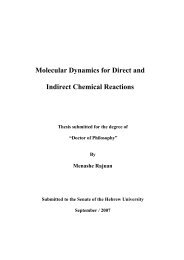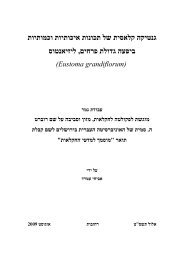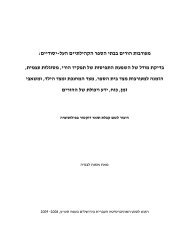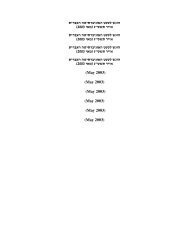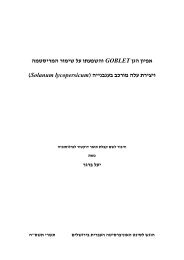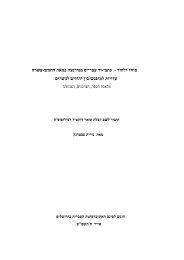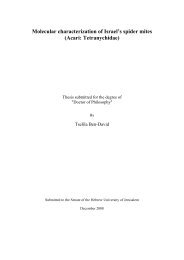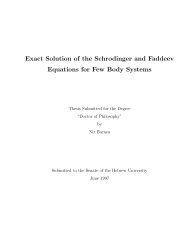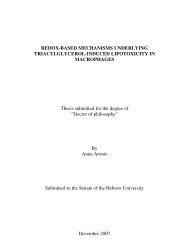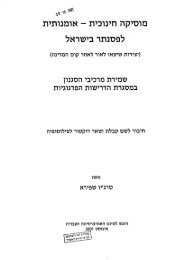Revealing the Mechanism of HSP104 Transcription Initiation in the ...
Revealing the Mechanism of HSP104 Transcription Initiation in the ...
Revealing the Mechanism of HSP104 Transcription Initiation in the ...
Create successful ePaper yourself
Turn your PDF publications into a flip-book with our unique Google optimized e-Paper software.
genetic approach, we identified components <strong>of</strong> <strong>the</strong> basal transcription mach<strong>in</strong>ery that are<br />
important for <strong>HSP104</strong> promoter activity. Four, us<strong>in</strong>g a comb<strong>in</strong>ation <strong>of</strong> ChIP experiments<br />
and a genetic approach, we sought possible regulators <strong>of</strong> Hsf1.<br />
Through <strong>the</strong> deletion analysis, we found that important part <strong>of</strong> <strong>the</strong> properties <strong>of</strong> <strong>the</strong><br />
34bp between -334 and -300 could be accounted for by a short HSE-like sequence<br />
resid<strong>in</strong>g <strong>in</strong> -305. Us<strong>in</strong>g ChIP assays we show that under optimal growth conditions<br />
nucleosomes on <strong>the</strong> <strong>HSP104</strong> promoter conta<strong>in</strong> mostly acetylated H3 and H4. However,<br />
follow<strong>in</strong>g heat shock <strong>the</strong>re is a rapid, but transient, decrease <strong>in</strong> <strong>the</strong> concentration <strong>of</strong><br />
acetylated histones on <strong>the</strong> promoter which seems to be partly mediated by Msn2/4.<br />
Namely, <strong>the</strong> Ras/PKA pathway controls H3 and H4 acetylation state via Msn2/4, <strong>the</strong>reby<br />
govern<strong>in</strong>g <strong>in</strong>duction <strong>of</strong> <strong>the</strong> promoter. We fur<strong>the</strong>r show that <strong>the</strong> decrease <strong>in</strong> acetylated H3<br />
and H4 on <strong>the</strong> promoter occurs via two dist<strong>in</strong>ct mechanisms. F<strong>in</strong>ally, we show that Hsf1<br />
b<strong>in</strong>d<strong>in</strong>g to <strong>the</strong> promoter is constitutive regardless <strong>of</strong> stress conditions, but is reduced <strong>in</strong><br />
ras2Δ cells. Us<strong>in</strong>g <strong>the</strong> genetic approach, we found that Rpb4, components <strong>of</strong> <strong>the</strong><br />
SRB/MED coactivator complex, or <strong>of</strong> <strong>the</strong> SAGA and SWI/SNF complexes are critical for<br />
proper <strong>HSP104</strong> transcription. We also identified components <strong>of</strong> <strong>the</strong> basal transcription<br />
mach<strong>in</strong>ery (primarily <strong>of</strong> <strong>the</strong> SAGA complex) that are critical for Hsf1 activity.<br />
These four approaches comb<strong>in</strong>ed allow <strong>the</strong> establishment <strong>of</strong> a model describ<strong>in</strong>g<br />
<strong>the</strong> series <strong>of</strong> molecular events occurr<strong>in</strong>g on <strong>the</strong> <strong>HSP104</strong> promoter before and after heat<br />
shock.<br />
ii



